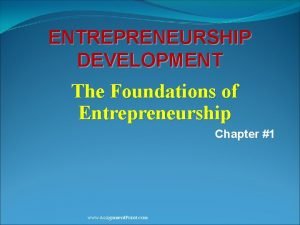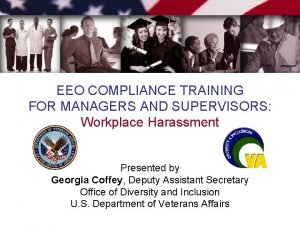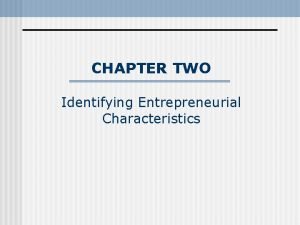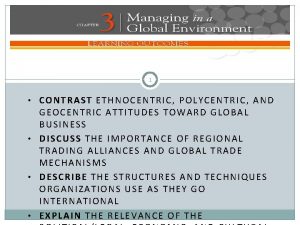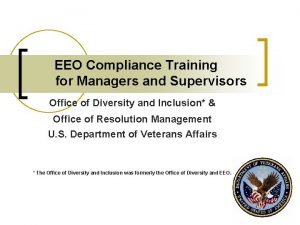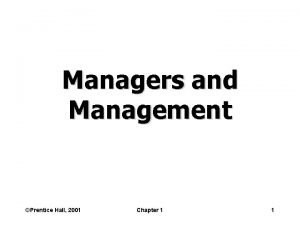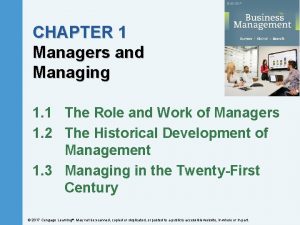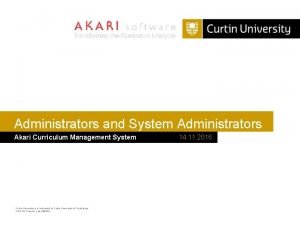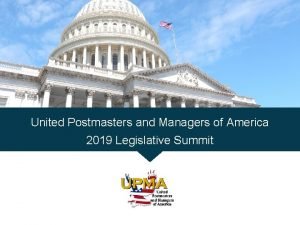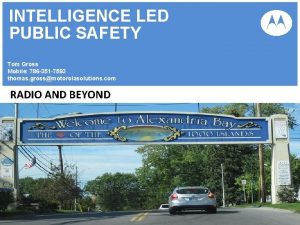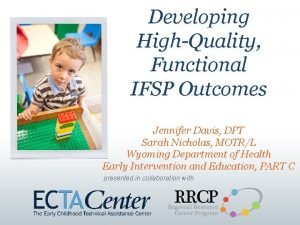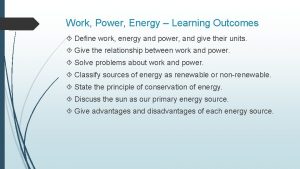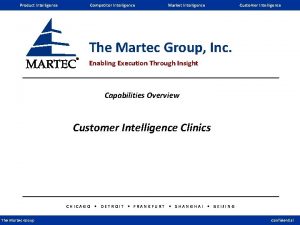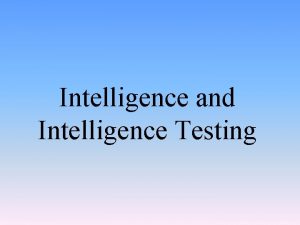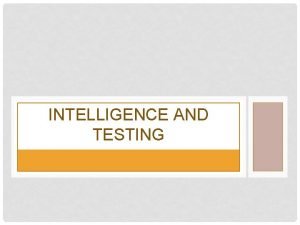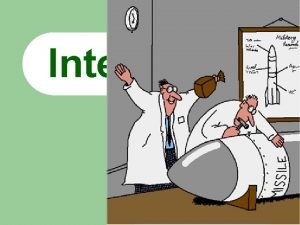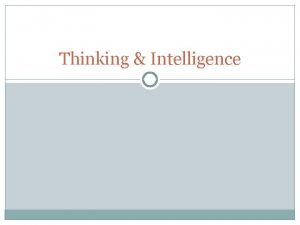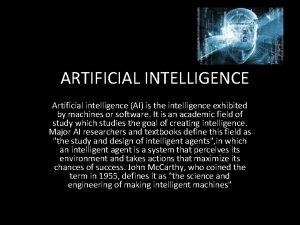Safety Intelligence of Senior Managers and Safety Outcomes



![Why should we look at this? • […], managers can change and improve existing Why should we look at this? • […], managers can change and improve existing](https://slidetodoc.com/presentation_image_h/8e5d99a75b49a537f4ac8abec6e0f049/image-4.jpg)


















- Slides: 22

Safety Intelligence of Senior Managers and Safety Outcomes Laura Fruhen

What is Safety Intelligence? • Skills and traits of senior executive managers in relation to safety • Abilities and Understanding regarding – Information – Safety risks to the organization – Decision making (Kirwan, 2008)

Who and where?
![Why should we look at this managers can change and improve existing Why should we look at this? • […], managers can change and improve existing](https://slidetodoc.com/presentation_image_h/8e5d99a75b49a537f4ac8abec6e0f049/image-4.jpg)
Why should we look at this? • […], managers can change and improve existing corporate culture by establishing safety – recognisable for all staff members – as high priority. ” (German Federal Bureau of Aircraft Accidents Investigation, 2004) • Management commitment is one of the main drivers of employees safety performance (Michael, Evans, Jansen & Haight, 2005) • Management is one of the most frequent employed safety climate factors (Guldenmund, 2000)

Leadership and Safety: what do we know? • Leadership style has an impact on safety (e. g. Kelloway, Mullen & Francis, 2006; Clarke & Ward, 2006) • Two examples – The full range leadership model (Bass, 1985) – Leader-member exchange (Dansereau, Cashman, & Graen, 1973)

Leadership and Safety: The full range of Leadership Model (Bass, 1985) Transformational Leadership Transactional leadership Laissez Faire Leadership

The full range of Leadership Model and Safety • Transformational Leadership – has a strong positive effect on safety (e. g. Zohar, 2002) • Laissez faire leadership – has a strong negative effect on safety (e. g. Zohar, 2002) • The effects of transformation leadership style on performance are stronger in maximum contexts (Lim & Ployhart, 2004).

Leader-Member Exchange (LMX) and Safety • LMX has been shown to be positively related to safety citizenship behaviour. • LMX has been shown to be positively related to safety citizenship role definitions. (Hofmann, Morgeson & Gerras, 2003)

Leadership and Safety: Leader-Member Exchange (LMX) (Danserau, Graen & Haga, 1975) • LMX focuses on the relation of the leader to each of their followers – Followers are divided into in-group and out-group members • Task of the leader: drive the relationship from a tentative first stage to a deeper more meaningful one

What we don’t know so far! • What are the characteristics of the people at the top of an organisation who achieve high quality safety performance? • How do senior executive managerial skills and traits affect safety outcomes? • How does an executive manager indicate to the workforce that he or she is highly committed to safety?

What Leadership Model is suitable for the top of the organisation? • Only 5% of the leadership literature focuses on Senior executive management • Interpersonal theories of leadership do not apply to executive forms of influence (Horn & Zaccaro, 2003)

Skill based Leadership Outcomes measures Skills Knowledge Mumford et al. , 2000 – revised model Managerial Safety Commitment Personality Motivation Problem Solving Social Competence Organisational Safety Traits

Investigation of Safety Intelligence Questionnaire study Aim: What constructs identified from the literature review are really relevant? Sample: • Subject matter experts (n=38) – senior executive managers – other managers that frequently interact with CEOs Measures • Questionnaire with two open questions

How would you answer these two questions? – ‘What kind of person would you like an ideal CEO to be regarding his or her effect on safety? ’ – ‘What behaviour would you like an ideal CEO to demonstrate regarding his or her effect on safety? ’.

How did we analyse the data? • Qualitative content analysis (Mayring, 2000) – Carried out by two independent coders – Interrater Agreements: • Behaviours: Cohen’s Kappa = 0. 66 (p<. 001) ; Kripp α =. 664 • Characteristics: Cohen’s Kappa = 0. 78 (p<. 001) ; Kripp α =. 776 • Overall: Cohen’s Kappa =. 776 (p<. 001) ; Kripp α =. 773

Results of Questionnaire Analysis Derived from Literature Social Competence X Safety Knowledge X Problem Solving X Personality Motivation/ Safety Prioritisation Leadership X X Emerged from Dataset X X

Results of Questionnaire Analysis 29 42 39 41 39 22

For further Exploration: Interview Study Sample: • CEOs and Board members (3 ANSPs) Measures • Exploratory Semi Structured Interview – Open questions & Probing questions – Trying out and development of scenarios Analysis • Qualitative content analysis – Carried out by two coders

Results interview study How do you show your commitment to safety? – engagement in terms of ‘talking about safety and publishing material about safety’ – being ‘clear about one’s safety goals and safety itself’ – having safety on the top of the agenda – being proactive – be safe – give positive feedback and rewards

The next step… Aim: How do the identified constructs affect safety outcomes? Sample: • CEOs and Board members (n = 1215 ANSPs) Measures • Semi Structured Interview – Open questions – Scenarios • Questionnaires • Outcome Variables – Organisational level measures – Individual level measures

From your point of view • What will be the benefits for an organisation that has knowledge about senior management safety commitment? • How would you transfer this knowledge into the organisation?

Thank you for your attention!
 Enterprising skills and qualities
Enterprising skills and qualities Features of entrepreneurship
Features of entrepreneurship Chapter 1 managers and managing
Chapter 1 managers and managing Distinguish between entrepreneur and manager
Distinguish between entrepreneur and manager Foundation of entrepreneurship development
Foundation of entrepreneurship development Compliance training for managers
Compliance training for managers Difference between an entrepreneur and a manager
Difference between an entrepreneur and a manager Polycentric attitude adalah
Polycentric attitude adalah Eeo compliance training for managers and supervisors
Eeo compliance training for managers and supervisors Managers and management chapter 1
Managers and management chapter 1 A carefully developed overall approach to leading
A carefully developed overall approach to leading Akari curriculum
Akari curriculum United postmasters and managers of america
United postmasters and managers of america Intelligence led public safety
Intelligence led public safety Ongoing planning in nursing
Ongoing planning in nursing Example of learning objectives
Example of learning objectives Goals and expected outcomes
Goals and expected outcomes Reported speech learning objectives
Reported speech learning objectives Objective of input output devices
Objective of input output devices Examples of ifsp outcomes and strategies
Examples of ifsp outcomes and strategies Sound energy definition
Sound energy definition Learning outcomes of profit and loss
Learning outcomes of profit and loss Learning objectives of work and energy
Learning objectives of work and energy




